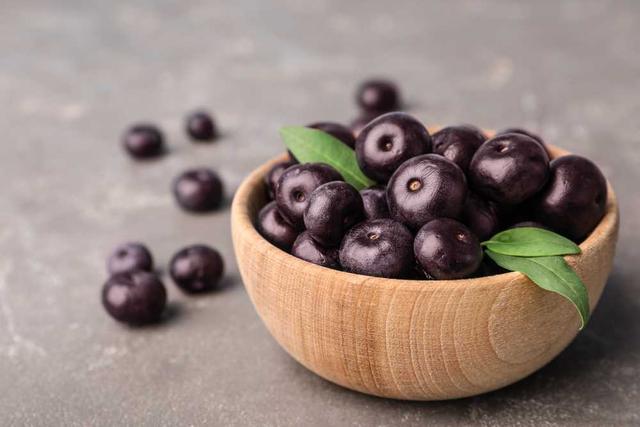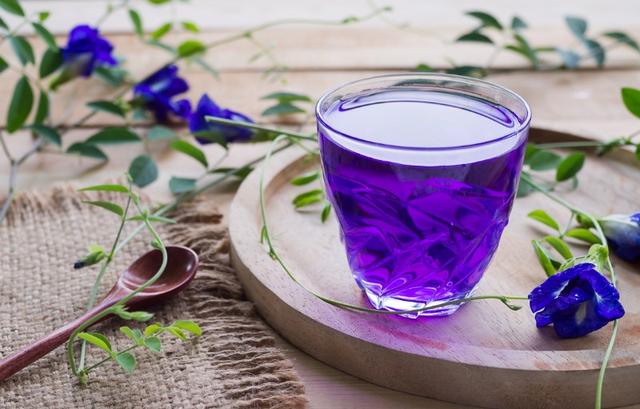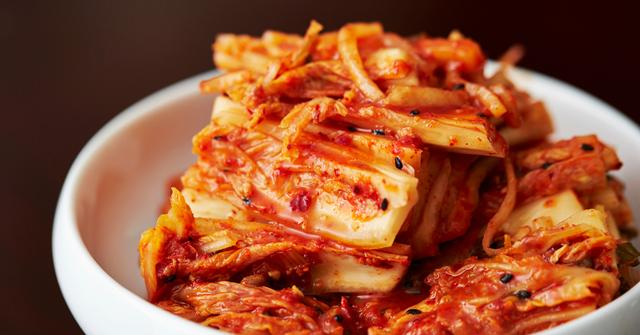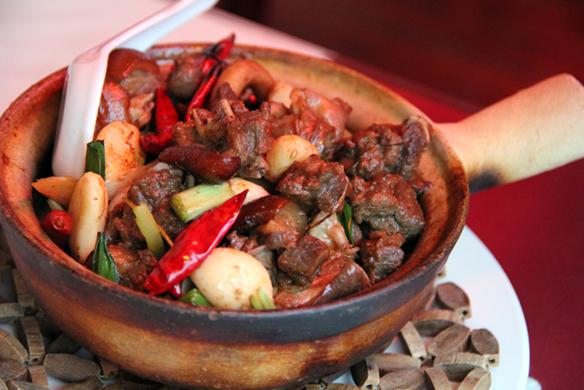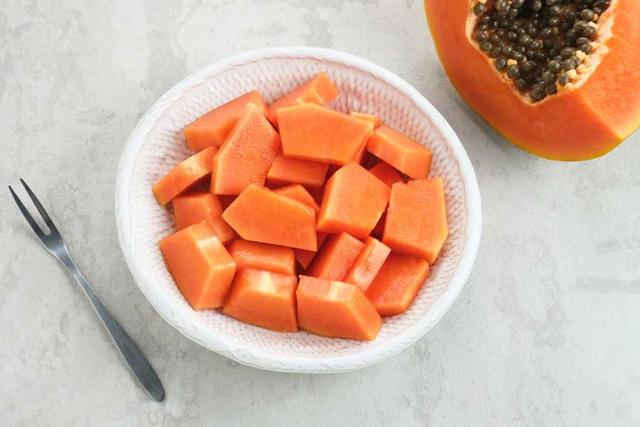
“Exploring the Enigmatic Flavor of Matcha: Unveiling the Delicate Balance of Earthy, Umami, and Slight Bitterness in this Ancient Japanese Green Tea.”
Exploring the Flavor Profile of Matcha: What Does Matcha Taste Like?
Matcha, a Japanese green tea powder, has a unique and complex flavor profile. It is known for its mellow vegetal grassy notes, natural sweet nuttiness, and a touch of bitterness with a pleasant savory ending. This savory taste, called umami, adds a depth and intensity to the flavor of matcha. Umami is often described as a savory deliciousness that enhances the overall taste experience. Some people may find it difficult to describe the taste of matcha because it is so unique and unlike any other tea or beverage they have tried before.

The flavor of matcha is influenced by various factors, including the way it is grown and processed. Matcha leaves are grown in shade for 3 to 4 weeks before harvesting, which increases the amount of chlorophyll in the leaves and gives them their vibrant green color. This also adds nutrients to the leaves and affects the flavor profile of the tea.
To prepare matcha, it is important to use fresh spring water or filtered water to bring out the subtle flavors of matcha. Well water or hard water can leave a strong aftertaste. The temperature of the water should be kept below boiling point (175 degrees F or 80 degrees C) to avoid making the matcha taste bitter.
There are two traditional methods of preparing matcha: Usucha and Koicha. Usucha is made by whisking 1 teaspoon of organic matcha powder with 70 milliliters (¼ cup + 2 teaspoons) of water. This results in a light, flavorful, and smooth tea. If desired, more water can be added for a lighter taste.
Koicha, on the other hand, is a thicker and more full-bodied matcha tea that is typically used in Japanese tea ceremonies. It requires whisking 2 teaspoons (4 grams) of matcha with 40 milliliters (2 tablespoons + 2 teaspoons) of hot water. This method produces a more intense matcha taste and a creamy mouthfeel.
When it comes to the origin of matcha, it is recommended to use premium matcha from Japan for the best taste experience. Matcha from Shizuoka prefecture in Japan is highly regarded for its quality.
Choosing organic matcha is also important, as it ensures that no pesticides or harmful chemicals are present in the tea. Since matcha is consumed in its entirety, including the whole stone ground tea leaf, drinking organic matcha is even more crucial.
For those who find matcha too bitter, adding a small amount of sugar or sweetener alternative can help balance out the bitterness and make it more enjoyable. However, some people prefer to drink matcha straight without any sweeteners.
Matcha can be used in various recipes and preparations beyond traditional tea. It can be stirred into morning oatmeal or cereal for an added boost of flavor and antioxidants. There are also pre-mixed matcha latte options available for convenience. To make a traditional matcha latte, heat water to 175 degrees F (80 degrees C), whisk 1 teaspoon of matcha with hot water and sweetener (optional), froth milk or non-dairy alternative separately, then combine the matcha mixture with frothed milk.
To store matcha properly, it should be kept in an airtight container away from light and heat. Once opened, it is best to use matcha as soon as possible to maintain its freshness and flavor. With its numerous health benefits and versatile uses, exploring the flavor profile of matcha can be an exciting journey for tea lovers.
Unveiling the Unique Taste of Matcha: A Comprehensive Guide
Matcha, a Japanese green tea powder made from the Camellia Sinensis plant, offers a unique and complex flavor profile. Unlike regular green tea, matcha is grown and processed differently to enhance its taste. The leaves are covered and grown in shade for several weeks before being harvested, steamed, dried, and stone ground into a fine powder.
The flavor notes of matcha are diverse and intriguing. Ceremonial Matcha Organic Green Tea, for example, has mellow vegetal grassy notes, natural sweet nuttiness, a touch of bitterness, and a pleasant savory ending known as umami. Umami is the fifth flavor that follows sweet, bitter, sour, and salty. It adds a savory deliciousness that deepens and intensifies the overall flavor of matcha.
Describing the taste of matcha can be challenging because it is so unique. Some may call it earthy tasting or have difficulty finding words to capture its essence. However, if you have heard that matcha is too bitter, it’s important to note that there are factors that contribute to this bitterness.

To make the best-tasting matcha tea beverage, there are several hacks to follow:
1. Type of Water – Fresh spring water or filtered water is preferred as they bring out the subtle flavors of matcha due to their pH level and mineral content. Avoid using well water or hard water as they can leave a strong aftertaste.
2. Temperature of Water – Keep the water temperature at a maximum of 175 degrees F (80 degrees C). Boiling water can make matcha taste bitter. If you don’t have a temperature-regulated kettle, boil the water and let it sit for a while to cool down before using.
3. Preparation Methods – There are two common ways to prepare matcha: Usucha and Koicha. Usucha is a thinner matcha tea suitable for everyday drinking, while Koicha is a thicker, full-bodied matcha often used in Japanese tea ceremonies. Adjust the amount of matcha powder and water according to your taste preferences.
4. Origin – For the best taste experience, choose premium matcha from Japan. Fraser Tea offers organic matcha tea from Shizuoka prefecture, known for its high-quality teas.
5. Organic vs. Non-Organic – Opt for organic matcha to ensure you’re consuming a product free from pesticides and other chemicals. Fraser Tea only sells certified organic teas.
6. Sweeteners – If you’re new to matcha and find it too bitter, adding a small amount of sugar or a sweetener alternative can help balance the flavors.
In addition to traditional brewed matcha tea, there are numerous ways to incorporate matcha into recipes. Matcha can be stirred into morning oatmeal or cereal, used in smoothies, baked goods, desserts, and even made into lattes. Fraser Tea offers various flavored matchas that add an extra dimension of taste to these recipes.
When preparing matcha latte using the traditional method, it’s important to whisk the matcha powder with hot water first before adding milk or non-dairy alternatives. The mixture should be free of lumps before incorporating the frothed milk for a creamy and satisfying beverage.
To store matcha properly, use airtight tea storage tins to preserve its freshness. Once opened, it is recommended to use matcha as soon as possible for optimal flavor. Unopened matcha can last several months if stored away from light and heat.
Now that you have a comprehensive guide on what matcha tastes like and how to use it in various recipes, you can explore this unique green tea powder and enjoy its energizing boost of antioxidants along with its distinct flavor profile.
From Earthy to Savory: Understanding the Flavor Notes of Matcha
Matcha, the Japanese green tea powder, has a unique flavor profile that can be described as earthy, savory, and slightly bitter. The flavor of matcha is often compared to the taste of freshly cut grass or seaweed. It has a rich vegetal quality that is both refreshing and comforting.
One of the key factors that contribute to the flavor of matcha is the shade-grown process. By growing the tea plants in shade for several weeks before harvesting, it increases the chlorophyll content in the leaves, resulting in a vibrant green color and a more intense flavor.
The flavor notes of matcha can vary depending on its grade and origin. Ceremonial grade matcha, like Fraser Tea’s Organic Matcha Green Tea, offers a complex flavor profile with mellow vegetal grassy notes, natural sweet nuttiness, a touch of bitterness, and a pleasant savory ending known as umami.
Umami is often described as a savory deliciousness that deepens and intensifies the flavor. It adds depth and complexity to matcha, making it even more enjoyable to drink. The umami taste is one of the reasons why matcha is so irresistible to many people.
When preparing matcha, it is important to use fresh spring water or filtered water to bring out its subtle flavors. Using well water or hard water can leave a strong aftertaste that may affect the overall taste experience.
The temperature of water used for making matcha should not exceed 175 degrees F (80 degrees C). Boiling water can make matcha taste bitter, so it’s best to let it cool down slightly before using it. This ensures that you get a smooth and balanced flavor from your matcha.
There are two main methods for preparing matcha: Usucha and Koicha. Usucha refers to making a thinner matcha tea for everyday drinking, while Koicha is a thicker and more concentrated matcha used in Japanese tea ceremonies.
To make Usucha, you would typically use 1 teaspoon of organic matcha powder to 70 milliliters (¼ cup + 2 teaspoons) of water. This results in a light, flavorful, and smooth tea. You can adjust the amount of water to your taste preference.
Koicha, on the other hand, requires 2 teaspoons (4 grams) of matcha to 40 milliliters (2 tablespoons + 2 teaspoons) of hot water. This creates a thicker and fuller-bodied matcha with an intense flavor and creamy mouthfeel.
When it comes to choosing matcha, it is recommended to opt for premium matcha from Japan. Fraser Tea’s organic matcha collection is sourced from Shizuoka prefecture in Japan, ensuring high quality and authentic taste.
Organic matcha is also preferred as it guarantees that no harmful pesticides or chemicals were used during its cultivation. Since you are consuming the whole stone ground tea leaf when drinking matcha, choosing organic ensures a pure and safe tea experience.
If you find the taste of matcha too bitter initially, you can add a small amount of sugar or sweetener alternative to take the edge off. However, as you become accustomed to the unique flavor of matcha, you may find that you enjoy it without any additional sweeteners.
In addition to traditional preparations like plain brewed matcha tea or matcha lattes, there are many creative ways to incorporate matcha into your recipes. You can stir it into your morning oatmeal or cereal for an extra boost of antioxidants and flavor. Matcha can also be used in smoothies, baked goods, desserts, and more.
To store your matcha properly, it is best to keep it in an airtight container away from light and heat. If unopened, matcha can last for several months. However, once opened, it is recommended to use it as soon as possible to maintain its freshness and flavor.
Now that you have a better understanding of the flavor notes of matcha and how to use it in various preparations, you can confidently explore the world of matcha and enjoy its energizing boost of antioxidants and health benefits.

The Delightful Taste of Matcha: A Journey into its Flavors
Matcha, the vibrant green Japanese green tea powder, offers a unique and delightful taste that is unlike any other tea. Its flavor profile is complex, with mellow vegetal grassy notes, natural sweet nuttiness, a touch of bitterness, and a pleasant savory ending known as umami. Umami is the fifth flavor, following sweet, bitter, sour, and salty, and it adds a savory deliciousness that deepens and intensifies the overall flavor of matcha.
Describing the taste of matcha can be challenging because it is so unique. Some may describe it as earthy tasting or have difficulty putting it into words. However, one thing is for sure – matcha has a distinct and unforgettable flavor that makes drinking it irresistible.
Factors Affecting the Taste of Matcha
- Growing Conditions: Matcha is grown differently than regular green tea. The tea plants are covered in shade for several weeks before harvesting to increase chlorophyll content and alter the flavor notes of the leaves.
- Type of Water: Using fresh spring water or filtered water enhances the subtle flavors of matcha due to their pH level and mineral content.
- Temperature of Water: To avoid bitterness, it is recommended to use water at a maximum temperature of 175 degrees F (80 degrees C) when preparing matcha.
Preparing Matcha
There are two main methods for preparing matcha:
- Usucha: This method creates a thinner matcha tea suitable for everyday drinking. It involves mixing 1 teaspoon of organic matcha powder with 70 milliliters (¼ cup + 2 teaspoons) of water. The resulting tea is light, flavorful, and smooth. Adjust the amount of water to taste if you prefer a lighter flavor.
- Koicha: This method produces a thicker, full-bodied matcha tea typically used in Japanese tea ceremonies. It requires 2 teaspoons (4 grams) of matcha mixed with 40 milliliters (2 tablespoons + 2 teaspoons) of hot water. Koicha has an intense matcha taste and a creamy mouthfeel.
Using Matcha in Recipes
Matcha can be used in various recipes to add its unique flavor and health benefits. You can stir it into your morning oatmeal or cereal for an energizing boost. Additionally, matcha is perfect for making lattes, smoothies, baked goods, and desserts.
Storing Matcha
To maintain the freshness and quality of matcha, store it in an airtight container away from light and heat. Once opened, it is best to use matcha as soon as possible. If stored properly, unopened matcha can last for several months.
The delightful taste of matcha and its versatility in recipes make it a must-try ingredient for tea lovers and food enthusiasts alike. Whether enjoyed as a traditional tea ceremony drink or incorporated into various culinary creations, matcha offers a unique flavor experience that is sure to delight the senses.
Decoding the Flavor of Matcha: What You Need to Know
Matcha, a Japanese green tea powder, has a unique and complex flavor profile that sets it apart from regular green tea. The flavor of matcha is influenced by several factors, including the way it is grown and processed. Matcha leaves are grown in shade for several weeks before harvesting, which increases the chlorophyll content and gives the leaves a vibrant green color. This process also adds nutrients and changes the flavor notes of the tea.
One of the key flavor notes in matcha is its mellow vegetal grassiness. This gives matcha a fresh and earthy taste that is often described as “green” or “leafy.” The natural sweetness of matcha adds another layer of flavor, with hints of nuttiness that balance out the grassy notes. However, it’s important to note that matcha can also have a touch of bitterness, which some people find pleasant.
A defining characteristic of matcha’s flavor is its umami taste. Umami is often described as a savory deliciousness that deepens and intensifies the overall flavor. It adds richness to matcha and makes it truly irresistible to many tea drinkers.
When preparing matcha, it’s crucial to use the right type of water and maintain the proper water temperature. Fresh spring water or filtered water is preferred because they bring out the subtle flavors of matcha without leaving any strong aftertaste. The water temperature should be kept at a maximum of 175 degrees F (80 degrees C) to avoid making the matcha taste bitter.
There are two main methods for making plain Japanese matcha tea: Usucha and Koicha. Usucha involves using 1 teaspoon of organic matcha powder with 70 milliliters (¼ cup + 2 teaspoons) of water to create a lighter and more flavorful tea. On the other hand, Koicha requires 2 teaspoons (4 grams) of matcha with 40 milliliters (2 tablespoons + 2 teaspoons) of hot water to produce a thicker and more intense matcha tea.
To fully appreciate the flavor of matcha, it is recommended to use premium matcha from Japan. Organic matcha is also highly recommended to ensure that you are consuming a high-quality product that is free from pesticides and other harmful chemicals.
If you find the taste of matcha too bitter, you can add a small amount of sugar or sweetener alternative to take the edge off. However, many long-time matcha drinkers enjoy it straight up without any additional sweeteners.
Matcha can be used in various recipes and beverages, such as smoothies, lattes, oatmeal, and baked goods. It is important to note that matcha powder is best consumed immediately after mixing as it is suspended in liquid rather than dissolved.
To store matcha properly, it should be kept in an airtight container away from light and heat. Once opened, it is recommended to use matcha as soon as possible for optimal freshness. Unopened matcha can last for several months if stored correctly.
In conclusion, the flavor of matcha is complex and unique, with mellow vegetal grassy notes, natural sweet nuttiness, a touch of bitterness, and a pleasant savory ending known as umami. By following proper preparation techniques and using high-quality organic matcha from Japan, you can fully enjoy the rich flavors and health benefits that matcha has to offer.
Unlocking the Secrets of Matcha’s Flavor Palette
Matcha, a Japanese green tea powder, has a unique and complex flavor profile that can be described as having mellow vegetal grassy notes, natural sweet nuttiness, a touch of bitterness, and a pleasant savory ending. The savory taste, known as umami, adds depth and intensifies the overall flavor experience. This combination of flavors makes matcha irresistible to many tea enthusiasts.
The process of growing and processing matcha is what gives it its distinct flavor. The tea plants used for matcha are grown in shade for several weeks before harvesting. This increases the chlorophyll content in the leaves, resulting in a vibrant green color and adding nutrients to the tea. Additionally, the leaves are stone ground into a fine powder, allowing for the consumption of the entire leaf when drinking matcha.
To fully appreciate the flavor of matcha, it is important to prepare it correctly. Using fresh spring water or filtered water is preferred to bring out the subtle flavors of matcha. Boiling water should be avoided as it can make the matcha taste bitter. Instead, keep the water temperature at a maximum of 175 degrees F (80 degrees C).
There are two traditional methods of preparing matcha: Usucha and Koicha. Usucha is a thinner matcha tea that is suitable for everyday drinking. It requires 1 teaspoon of organic matcha powder to 70 milliliters (¼ cup + 2 teaspoons) of water. This results in a light, flavorful, and smooth tea. If you prefer an even lighter taste, you can add more water to adjust to your preference.
Koicha, on the other hand, is a thicker and fuller-bodied matcha that is typically used for Japanese tea ceremonies. It calls for 2 teaspoons (4 grams) of matcha to 40 milliliters (2 tablespoons + 2 teaspoons) of hot water. This method produces a more intense matcha taste and a creamy mouthfeel.
When it comes to the origin of matcha, it is recommended to choose premium matcha from Japan for the best flavor experience. Matcha from Shizuoka prefecture in Japan is highly regarded for its quality and taste.
Opting for organic matcha is also important as you are consuming the whole stone ground tea leaf when drinking matcha. Using organic tea ensures that no harmful pesticides or chemicals are present in your cup of tea.
While matcha can be enjoyed on its own, it can also be used in various recipes to add a unique twist to your dishes. Matcha blends, such as blueberry matcha, can be incorporated into smoothies, baked goods, and desserts for an extra boost of flavor. Additionally, stirring matcha into your morning oatmeal or cereal can provide a healthy and flavorful start to your day.
To store matcha properly, it is recommended to keep it in an airtight container away from light and heat. Once opened, it is best to use matcha as soon as possible to maintain its freshness and flavor. Unopened matcha can last for several months if stored correctly.
In conclusion, matcha has a complex flavor profile with mellow vegetal grassy notes, natural sweet nuttiness, a touch of bitterness, and a pleasant savory ending. The process of growing and processing matcha plays a crucial role in shaping its flavor. By following proper preparation techniques and using high-quality organic matcha from Japan, you can unlock the full potential of this delicious green tea powder.
From Bitter to Sweet: Discovering the Diverse Tastes of Matcha
Matcha, a Japanese green tea powder, offers a unique and complex flavor profile that can range from bitter to sweet. The taste of matcha is often described as having mellow vegetal grassy notes with a natural sweet nuttiness. It also has a touch of bitterness that is balanced by a pleasant savory ending known as umami. Umami is the fifth flavor after sweet, bitter, sour, and salty, and it adds a savory deliciousness to matcha.
The different flavor notes in matcha are a result of the way it is grown and processed. Matcha leaves are grown in shade for several weeks before harvesting, which increases the amount of chlorophyll in the leaves and gives them their bright green color. This process also adds nutrients to the leaves and affects the flavor of the tea.
To prepare matcha, it is important to use fresh spring water or filtered water to bring out its subtle flavors. Using well water or hard water can leave a strong aftertaste. The temperature of the water should be kept at a maximum of 175 degrees F (80 degrees C) to avoid making the matcha taste bitter.
There are two ways to make matcha tea: Usucha and Koicha. Usucha is made by mixing 1 teaspoon of organic matcha powder with 70 milliliters (¼ cup + 2 teaspoons) of water. This creates a light, flavorful, and smooth tea. If desired, more water can be added for a lighter taste. Koicha, on the other hand, uses 2 teaspoons (4 grams) of matcha mixed with 40 milliliters (2 tablespoons + 2 teaspoons) of hot water. This results in a thicker and fuller-bodied tea with an intense matcha taste.
When it comes to choosing matcha, it is recommended to use premium matcha from Japan for the best taste. Organic matcha is also preferred as it ensures that no pesticides or other chemicals are present in the tea.
For those who find matcha too bitter, a small amount of sugar or sweetener alternative can be added to take off the edge. However, matcha can also be enjoyed straight up for those who appreciate its unique taste.
Matcha can be used in various recipes, including smoothies, baked goods, and desserts. It can also be stirred into morning oatmeal or cereal for an added boost of flavor and health benefits. However, it is important to consume matcha right away as the green tea powder is suspended in liquid and not dissolved.
To store matcha, it is best to keep it in an airtight container away from light and heat. Once opened, it should be used as soon as possible to maintain its freshness. Matcha can last for several months if stored properly.
In conclusion, matcha offers a diverse range of tastes from bitter to sweet. Its complex flavor profile with vegetal grassy notes, natural sweetness, and umami makes it a popular choice among tea enthusiasts. By following the recommended methods of preparation and using high-quality organic matcha from Japan, one can truly experience the deliciousness of this Japanese green tea powder.
Demystifying the Taste of Matcha: An In-Depth Examination
Matcha, a Japanese green tea powder, has a unique and complex flavor profile that sets it apart from other teas. The flavor notes of matcha can be described as mellow vegetal grassy notes with a natural sweet nuttiness. It also has a touch of bitterness but finishes with a pleasant savory taste called umami. Umami is the fifth flavor, following sweet, bitter, sour, and salty, and it adds a savory deliciousness to matcha.
The taste of matcha can be difficult to describe because it is so unique. Some may find it earthy tasting or have a hard time pinpointing its exact flavor. However, many people find matcha’s flavor to be irresistible once they try it.
To make the best-tasting matcha, there are several factors to consider. First, using fresh spring water or filtered water is preferred as it brings out the subtle flavors of matcha due to the pH level and minerals in the water. Avoid using well water or hard water as they can leave a strong aftertaste.
The temperature of the water is also important when preparing matcha. It should be kept at a maximum of 175 degrees F (80 degrees C) to avoid making the matcha taste bitter. If you don’t have a temperature-regulated tea kettle, you can boil the water and let it sit for a bit to cool down before using.
There are two ways to prepare plain Japanese tea with matcha: Usucha and Koicha. Usucha is made by mixing 1 teaspoon of organic matcha powder with 70 milliliters (¼ cup + 2 teaspoons) of water. This results in a light, flavorful, and smooth tea. If you prefer an even lighter taste, you can add more water to adjust the flavor.
Koicha, on the other hand, is a thicker and full-bodied matcha tea that is typically used in Japanese tea ceremonies. To make Koicha, mix 2 teaspoons (4 grams) of matcha with 40 milliliters (2 tablespoons + 2 teaspoons) of hot water. This will give you a more intense matcha taste and a creamy mouthfeel.
When it comes to the origin of matcha, it is recommended to use premium matcha from Japan to ensure the best taste. Fraser Tea’s organic matcha tea collection is sourced from Shizuoka prefecture in Japan, known for its high-quality teas.
Choosing organic matcha is also important as you are consuming the whole stone ground tea leaf when drinking matcha. Fraser Tea only sells organic teas, ensuring that no pesticides or harmful chemicals are present in their products.
If you find matcha to be too bitter for your liking, you can add a small amount of sugar or a sweetener alternative to take the edge off. However, many long-time matcha drinkers enjoy it straight up without any added sweeteners.
Matcha can be used in various ways beyond just drinking it as a plain brewed tea. It can be added to smoothies, baked goods, desserts, oatmeal, and cereal for an extra boost of flavor and health benefits.
To store matcha properly, it is recommended to keep it in an airtight container away from light and heat. Once opened, it is best to use matcha as soon as possible for optimal freshness. Unopened matcha can last for several months if stored correctly.
Now that you have a better understanding of what matcha tastes like and how to use it in different recipes, why not give it a try? Matcha offers not only delicious flavors but also numerous health benefits due to its high levels of antioxidants like theanine.
If you want to learn more about tea basics, wellness tips, tea origins, traditions, and new recipes using tea, be sure to explore Fraser Tea’s website. As a family-owned and operated business based in Michigan, Fraser Tea is dedicated to providing high-quality teas and sharing their passion for tea with others.
Savoring the Delicate Notes of Matcha: A Complete Guide to its Taste
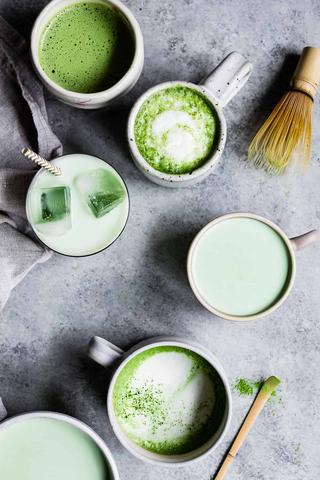
Matcha, a Japanese green tea powder, offers a unique and complex flavor profile that is worth exploring. When prepared correctly, matcha has mellow vegetal grassy notes, a natural sweet nuttiness, and a touch of bitterness with a pleasant savory ending. This combination of flavors creates a taste sensation known as umami, which adds depth and intensity to the overall flavor experience.
The shade-grown process used to cultivate matcha leaves plays a significant role in shaping its taste. By covering the plants for several weeks before harvesting, farmers increase the chlorophyll content in the leaves, resulting in their vibrant green color. This process also enhances the nutrient content and alters the flavor notes of the tea.
To fully appreciate the delicate flavors of matcha, it’s essential to prepare it correctly. Start by using fresh spring water or filtered water to bring out the subtle flavors without any strong aftertaste. The water temperature should be kept below boiling point (175 degrees F or 80 degrees C) to prevent bitterness.
There are two main methods of preparing matcha: Usucha and Koicha. Usucha involves whisking 1 teaspoon of matcha powder with 70 milliliters (¼ cup + 2 teaspoons) of water to create a light and flavorful tea. If you prefer a stronger and more full-bodied matcha experience, try Koicha by whisking 2 teaspoons (4 grams) of matcha with 40 milliliters (2 tablespoons + 2 teaspoons) of hot water.
When choosing matcha, opt for premium ceremonial grade from Japan for the best taste experience. Organic matcha is highly recommended as it ensures you are consuming tea leaves free from pesticides or other harmful chemicals.
If you find matcha too bitter initially, adding a small amount of sugar or a sweetener alternative can help balance the flavors. However, as you become more accustomed to the taste, you may find that you enjoy matcha without any additional sweeteners.
In addition to traditional tea preparation, matcha can be used in various recipes. It can be stirred into morning oatmeal or cereal, added to smoothies for an antioxidant boost, or incorporated into baked goods and desserts for a unique flavor twist.
To store matcha properly, keep it in an airtight container away from light and heat. Once opened, it is best to use matcha as soon as possible to maintain its freshness and flavor. Unopened matcha can last for several months if stored correctly.
Now that you have a complete guide to the taste of matcha and how to use it, why not give it a try? Explore the world of matcha and discover its health benefits and versatile uses. Join us on social media or subscribe to our newsletter for exclusive deals and more tea-related content.
The Complex and Irresistible Flavor Profile of Matcha
The complex and irresistible flavor profile of matcha is one of the reasons why it has become so popular. Matcha has a unique combination of flavors that make it distinct from other types of tea. It has mellow vegetal grassy notes, which give it a fresh and earthy taste. These notes are balanced by a natural sweet nuttiness, adding depth to the flavor. There is also a touch of bitterness, which adds complexity to the overall taste.
One of the most intriguing flavors in matcha is umami. Umami is often described as a savory deliciousness that deepens and intensifies the flavor. It is the fifth taste, following sweet, bitter, sour, and salty. The presence of umami in matcha makes it incredibly satisfying to drink and adds another layer of enjoyment to the experience.
The unique flavor profile of matcha can be attributed to its production process. The leaves used to make matcha are grown in shade for several weeks before harvesting. This shading process increases the amount of chlorophyll in the leaves, giving them their vibrant green color and adding nutrients. The shade also affects the flavor notes of the tea, contributing to its distinct taste.
When preparing matcha, it’s important to use high-quality water and control the temperature to bring out the subtle flavors. Fresh spring water or filtered water is preferred as they enhance the taste without any strong aftertaste. The temperature should be kept below boiling point (175 degrees F or 80 degrees C) to avoid making matcha taste bitter.
There are different ways to prepare matcha depending on personal preference and occasion. Usucha is a thinner matcha tea suitable for everyday drinking, while koicha is a thicker and more intense version used for Japanese tea ceremonies. Adjusting the ratio of matcha powder to water allows you to customize the strength and flavor according to your liking.
In terms of storage, matcha should be kept in an airtight container away from light and heat. Once opened, it is best to use matcha as soon as possible to maintain its freshness and flavor. With its complex and irresistible flavor profile, matcha can be enjoyed in various ways, including plain brewed tea, lattes, smoothies, baked goods, and desserts.
In conclusion, matcha has a unique and complex flavor profile that sets it apart from other types of tea. Its mellow vegetal grassy notes, natural sweet nuttiness, touch of bitterness, and umami create a harmonious combination that is both refreshing and satisfying. By understanding how to properly prepare and store matcha, you can fully appreciate its delicious taste and enjoy the many health benefits it offers.
In conclusion, matcha has a unique and distinct flavor profile. It offers a balance of earthiness, sweetness, and slight bitterness. With its grassy undertones and creamy texture, matcha can be described as smooth and refreshing. Its taste is often likened to green tea but with a more vibrant intensity. Whether enjoyed on its own or used in various culinary creations, matcha provides a delightful sensory experience for tea lovers seeking something out of the ordinary.
Learn More About Grilling
If you want to learn more about grilling, check out these other helpful resources!

